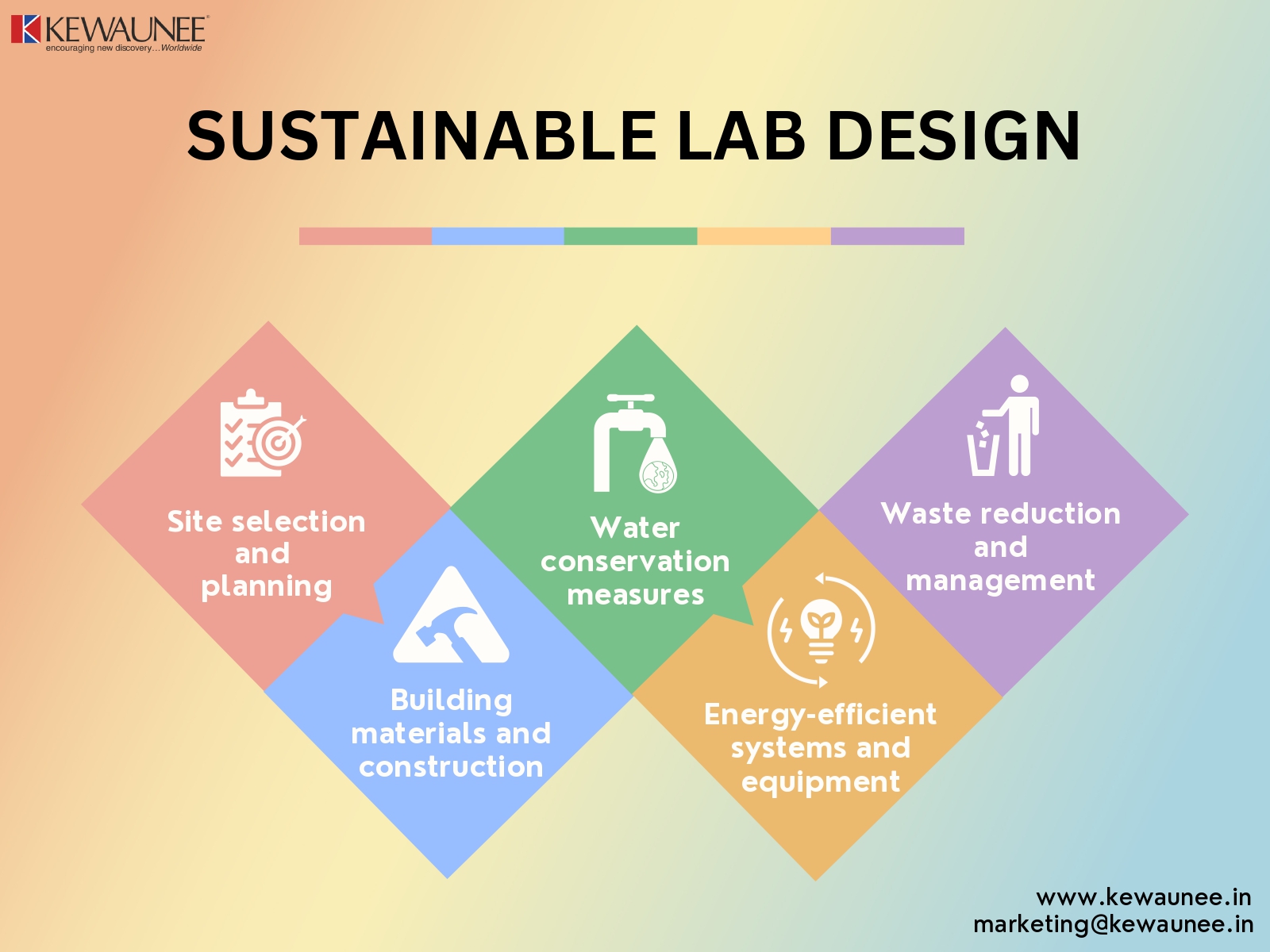Sustainable Lab Design: How Greenfield Labs Can Lead the Way
Greenfield labs are research facilities that are built from the ground up, often in rural or suburban areas. These labs have a unique opportunity to incorporate sustainable design principles into their construction and operation, creating a more environmentally friendly and cost-effective space for scientific discovery.
This blog will explore the benefits, design considerations, challenges, role of technology, future trends, and collaborative partnerships of sustainable lab design in greenfield labs.
Benefits of Sustainable Lab Design
Sustainable lab design offers numerous benefits to research institutions, including:
- Reduced environmental impact: By implementing sustainable design principles, greenfield labs can significantly reduce their energy consumption and greenhouse gas emissions, minimizing their impact on the environment.
- Improved health and safety for lab workers: Sustainable design can improve indoor air quality, reduce exposure to hazardous materials, and create a healthier and safer environment for lab workers.
- Long-term cost savings: Sustainable design can lead to long-term cost savings through reduced energy and water consumption, as well as reduced maintenance and operational costs.
Greenfield Lab Design Considerations
To achieve these benefits, greenfield labs should consider the following sustainable design principles:
- Site selection and planning: Careful site selection and planning can optimize building orientation and placement to take advantage of natural light, ventilation, and outdoor spaces.
- Building materials and construction: Sustainable materials and construction techniques, such as the use of renewable or recycled materials and energy-efficient building systems, can reduce the environmental impact of lab construction.
- Energy-efficient systems and equipment: Implementing energy-efficient HVAC systems, lighting, and lab equipment can significantly reduce energy consumption.
- Water conservation measures: Incorporating water-saving technologies, such as low-flow faucets and toilets, rainwater harvesting, and graywater reuse, can reduce water consumption.
- Waste reduction and management: Implementing waste reduction strategies, such as recycling, composting, and waste-to-energy programs, can reduce the environmental impact of lab operations.
Challenges of Sustainable Lab Design
While sustainable lab design offers many benefits, it also presents challenges, including:
- Overcoming resistance to change: Traditional lab designs and practices may be deeply ingrained, and there may be resistance to change. It is important to communicate the benefits of sustainable design to all stakeholders and provide education and training on new technologies and practices.
- Balancing sustainability with functionality and budget constraints: Sustainable design must balance environmental goals with the practical needs of a functioning lab, and must also be cost-effective within budget constraints.
- Addressing regulatory and compliance requirements: Labs must meet regulatory and compliance requirements while also incorporating sustainable design principles.
The Role of Technology in Sustainable Lab Design
Advancements in lab technology offer exciting opportunities for sustainable lab design, including:
- Energy-efficient lab equipment: The development of energy-efficient lab equipment, such as fume hoods and biosafety cabinets, can significantly reduce energy consumption.
- Lab automation: The use of lab automation technologies can reduce the need for manual labor and energy-intensive processes.
- Data analytics: The use of data analytics can help labs track and optimize energy consumption and other sustainability metrics.
The Future of Greenfield Labs
The future of sustainable lab design is rapidly evolving, with emerging trends and technologies such as:
- Net-zero energy labs: Labs that produce as much energy as they consume.
- Passive design strategies: Buildings that rely on natural ventilation, daylighting, and solar shading to reduce energy consumption.
- Circular economy principles: Labs that aim to create closed-loop systems for energy and material use, reducing waste and minimizing environmental impact.
As society continues to prioritize sustainability and environmental responsibility, greenfield labs are likely to play a significant role in the future of scientific research. Advancements in technology and new construction materials are likely to lead to even more innovative and sustainable lab designs in the coming years.
One emerging trend in greenfield labs is the use of modular construction methods, which allow for easy reconfiguration and scalability. Modular labs can be quickly and easily expanded or reconfigured to meet changing needs, reducing the need for new construction and minimizing waste.
Another trend is the integration of smart building technologies, such as automated lighting and heating systems, to maximize energy efficiency and reduce costs. These technologies can also improve the overall performance and functionality of lab equipment, making research more efficient and effective.
Additionally, the incorporation of green spaces and outdoor areas into lab design is becoming more popular. This not only improves the aesthetic appeal of the lab, but also provides a range of benefits such as improved air quality and stress reduction for lab workers.
Collaboration and Partnerships for Sustainable Lab Design
Achieving sustainable lab design requires a collaborative effort between architects, engineers, lab technicians, and sustainability experts. Cross-disciplinary collaboration is critical to ensuring that labs are designed and constructed to be as sustainable as possible while still meeting functional requirements.
Partnerships with industry leaders and sustainability experts can also provide valuable insights and expertise in sustainable lab design. These partnerships can help labs stay up-to-date on emerging trends and technologies, as well as best practices for sustainability in lab design and operation.
Conclusion
Greenfield labs have the potential to lead the way in sustainable lab design, with benefits ranging from reduced environmental impact to improved health and safety for lab workers. Achieving sustainable lab design requires careful consideration of factors such as site selection, building materials, and energy-efficient systems, as well as collaboration between a range of stakeholders.
As advancements in technology and construction methods continue to emerge, greenfield labs are likely to become even more sustainable and innovative in the years to come. By prioritizing sustainability in lab design and operation, labs can help drive progress towards a more sustainable and environmentally responsible future.
Comments are closed.











